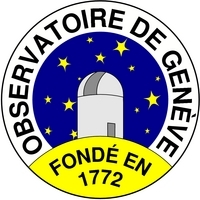
| INTEGRALPlanckGaiaPOLARCHEOPSEuclidATHENA |
| HEAVENSFACTCTALOFTSPICAJEM-EUSOXIPEeXTPTheseus |
| XRISMMAGBOUNDSMARTNet |
| ISDCCDCI |
| Data Centre for Astrophysics Astronomy Department of the University of Geneva |
Un-Beamed Tidal Disruption Events at Hard X-Rays
| We have detected nine TDE candidates at hard X-rays during eight years in a sample of ~53'000 galaxies closer than 100 Mpc. The observed hard X-ray fluxes and rate are consistent with the rates observed by XMM-Newton at soft X-rays or in the optical from SDSS observations and also consistent with expectations from simulations. The average hard X-ray spectral shape of our TDE candidates is in addition very similar to that usually observed in active galactic nuclei, pointing towards inverse Compton processes and electrons accelerated in shocks in the accretion flow. |
|---|
ABSTRACT
Context. Thanks to their thermal emission, Tidal Disruption Events (TDEs) were detected regularly in the soft X-rays and sometimes in the optical. Only few of them have been detected at hard X-rays: two are high redshift beamed events, one occurred at the core of a nearby galaxy and the last one is of a different nature, involving a compact object in the Milky Way.
Aims. The aims of this work are to obtain a first sample of hard X-ray selected un-beamed TDEs, to determine their frequency and to probe if TDEs are usually or exceptionally emitting at hard X-rays.
Methods. We performed extensive search for hard X-ray flares at the positions of over 53000 galaxies up to a distance of 100 Mpc in the Swift BAT archive. Light curves were extracted and parametrized. The quiescent hard X-ray emission was used to exclude persistently active galactic nuclei. Significant flares from non-active galaxies were derived and checked for possible contamination.
Results. We found a sample of nine TDE candidates, which translates in a rate of 2 × 10-5 galaxy-1 yr-1 above the BAT detection limit. This rate is consistent with these observed by XMM-Newton at soft X-rays and in the optical from SDSS observations, and expected from simulations. We conclude that hard X-ray emission should be ubiquitous in un-beamed TDEs and that electrons should be accelerated in their accretion flow.
Aims. The aims of this work are to obtain a first sample of hard X-ray selected un-beamed TDEs, to determine their frequency and to probe if TDEs are usually or exceptionally emitting at hard X-rays.
Methods. We performed extensive search for hard X-ray flares at the positions of over 53000 galaxies up to a distance of 100 Mpc in the Swift BAT archive. Light curves were extracted and parametrized. The quiescent hard X-ray emission was used to exclude persistently active galactic nuclei. Significant flares from non-active galaxies were derived and checked for possible contamination.
Results. We found a sample of nine TDE candidates, which translates in a rate of 2 × 10-5 galaxy-1 yr-1 above the BAT detection limit. This rate is consistent with these observed by XMM-Newton at soft X-rays and in the optical from SDSS observations, and expected from simulations. We conclude that hard X-ray emission should be ubiquitous in un-beamed TDEs and that electrons should be accelerated in their accretion flow.
| by Krzysztof Hryniewicz on 2015-05-27 | >> HEAVENS science results | >> All science results |







